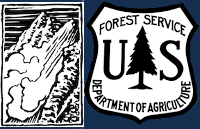11-12
This 115cm deep pit was dug on an east aspect at 9,100 feet near Hyalite Lake. The ECT failed on 21 taps, twice, and broke clean indicating unstable conditions. It is breaking on 5 cm of sugary facets sitting on an ice crust. Cracking, collapsing and avalanches were seen on this layer in the last 48 hours. Photo: GNFAC
Forecast link: GNFAC Avalanche Forecast for Mon Nov 21, 2011
Although it was calm in the drainage, winds were cross loading slopes at mid elevations which is where many ice climbs are. Ridgetop winds were also strong out of the southwest. Photo: GNFAC
Forecast link: GNFAC Avalanche Forecast for Mon Nov 21, 2011
The Big Sky Snow Safety triggered this slide on the south face with an avalauncher shot. It broke as a hard slab 2-4 feet deep. Size was R2D2.5 and failed on depth hoar/facets. Photo: Big Sky Snow Safety
GNFAC Avalanche Forecast for Sat Nov 19, 2011
It’s bad. Folks are triggering avalanches from low angled terrain which are propagating far and wide. Slopes that held early season snow are especially dangerous since the old snow became weak, faceted and sugary. With 1-2 feet of new snow this week it’s difficult to tell which slope is unstable and which is not.
Collapsing and shooting cracks at 9,600' in the Absaroks are indicative of the instability throughout southwest Montana. This is bulls eye information that the snowpack is unstable and would likely avalanche on anything steeper than 30 degrees. Photo: Q. Gidley
Forecast link: GNFAC Avalanche Forecast for Sat Nov 19, 2011
GNFAC Avalanche Advisory for Fri Nov 18, 2011
We have limited snowpack data right now, and will begin issuing danger ratings once we collect more data. For now let’s review what we know.
This fall was generally warm and dry, but many slopes have been covered in snow since October. This snow is the problem because it is weak and faceted.
